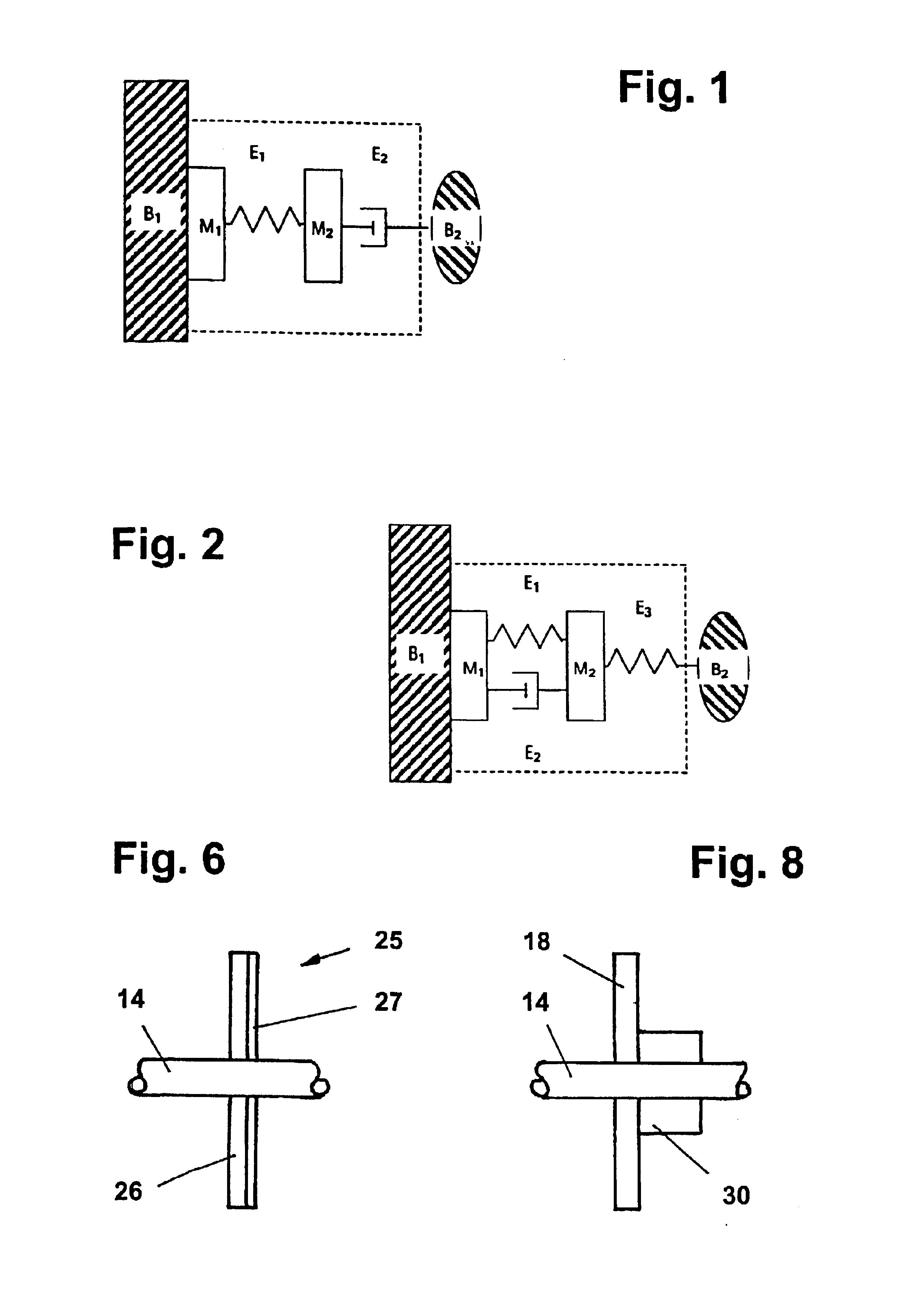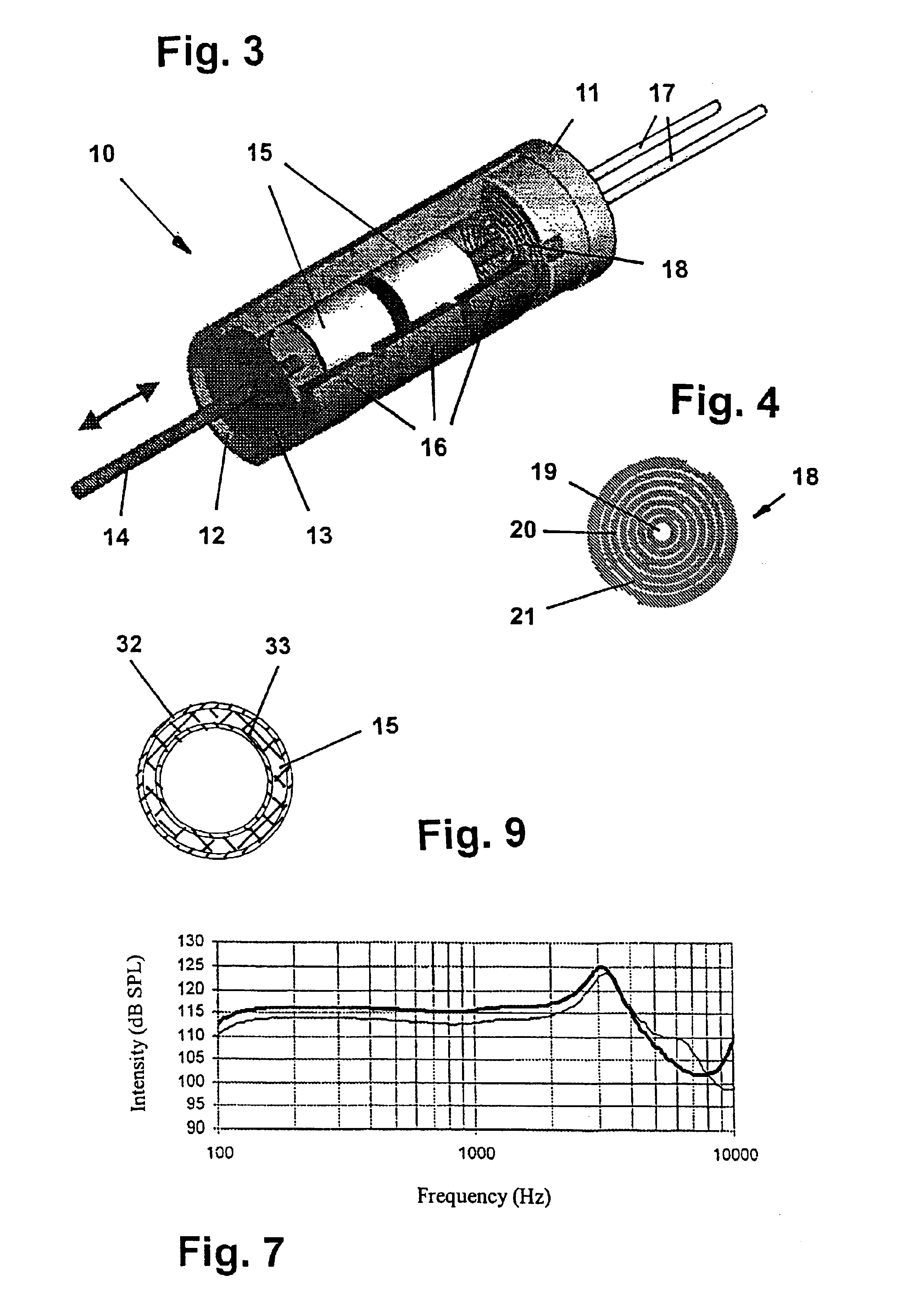Implantable transducer for hearing aids and process for tuning the frequency response of one such transducer
- Summary
- Abstract
- Description
- Claims
- Application Information
AI Technical Summary
Benefits of technology
Problems solved by technology
Method used
Image
Examples
Embodiment Construction
The schematics of FIGS. 1 and 2 show, in the block which is framed by the broken lines, a transducer which can be selectively used as an actuator which excites vibrations or a sensor which detects vibrations. M1 is the static part of the transducer. The static transducer part M1 represents an element which in the implanted state is in essentially rigid contact with a body part B1 of the implant wearer, for example, a muscle or bone which has a large mass compared to the mass of the transducer. M2 in FIGS. 1 and 2 represents the dynamic part of the transducer. M2 is in contact with a body part B2 of the implant wearer; its mass or impedance is preferably comparable to the mass or impedance of the transducer. Body part B2 can be the eardrum, a middle ear ossicle, the perilymph or the basilar membrane in the inner ear, especially in the case of an actuator.
In the arrangement shown in FIG. 1, the static transducer part M1 and the dynamic transducer part M2 are mechanically connected to ...
PUM
 Login to View More
Login to View More Abstract
Description
Claims
Application Information
 Login to View More
Login to View More - R&D
- Intellectual Property
- Life Sciences
- Materials
- Tech Scout
- Unparalleled Data Quality
- Higher Quality Content
- 60% Fewer Hallucinations
Browse by: Latest US Patents, China's latest patents, Technical Efficacy Thesaurus, Application Domain, Technology Topic, Popular Technical Reports.
© 2025 PatSnap. All rights reserved.Legal|Privacy policy|Modern Slavery Act Transparency Statement|Sitemap|About US| Contact US: help@patsnap.com



